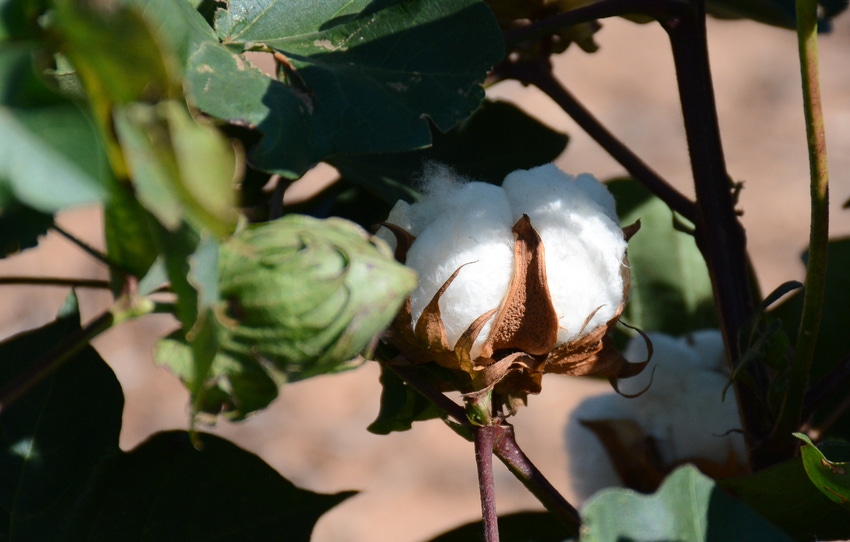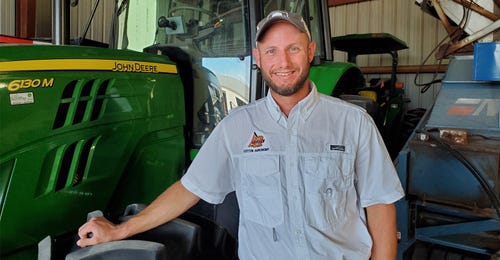
Cotton producers are encouraged to be realistic rather than optimistic when determining timing for harvest aid applications, Oklahoma State University Cotton Specialist Seth Byrd says.
"That postcard cotton, where everything's open, looks great, but we want to make money," says Byrd during the Cotton Tour at the recent virtual Milan No-Till Field Day. "Sometimes, it's not economically justifiable to open every boll on the plant.

"First, many of those smaller bolls we have to wait on don’t contribute significant pounds to yield and often contain sub-optimal quality. Secondly, and probably most importantly, by waiting for that small percentage of late bolls to open, we’re exposing our money bolls to weathering which will degrade fiber quality. We want to time harvest aid applications and harvest by focusing on the bolls that are going to make up the vast majority of the yield and value."
Byrd recommends the following methods to determine cotton defoliation timing:
Open boll percentage: 60%-75% before triggering an application.
Nodes above cracked boll: three to four.
Cutting/slicing bolls: When looking at a sliced boll to determine its harvestable maturity, Byrd says you should see a black layer around the seed coat and lint stringing out.
Ideal situation
Byrd says an ideal situation for application is 60% open bolls with four nodes from the uppermost cracked boll to two of the uppermost harvestable bolls.
"Take into account first position bolls only and harvestable bolls only," Byrd reemphasizes. A cotton plant may have three or four undersized nodes at the top, but, he says, "Don't let those influence your decision making."
Boll distribution
Boll distribution determines the relationship between the open boll percentage and those nodes with cracked bolls. Depending on plant growth and development, boll distribution is influenced by the following:
Environmental conditions (square/boll shed, fruiting gaps).
Water situation — irrigated, limited water, dryland.
Temperatures — DD60s
Variety maturity class— early versus late.
"Anything that affects the crop, affects where it places its bolls, whether it's shed or variety or management or other stresses… boll distribution is what determines the relationship between our open boll percentage and nodes with cracked bolls."
Harvest aid timing
When scheduling harvest aid applications, Bryd recommends a combination of the product's timing and a producer's own schedule. "We don't want to get ahead of ourselves.
"If you defoliate and leave it and can't get into the field quick enough with your harvest equipment, and that cotton is 100% open with no leaves, that's prime for regrowth. And if you have warm weather with rainfall, you can quickly get into a mess."
Byrd reemphasizes, "It's not often financially feasible to try to open every single boll on the plant. It may look amazing, but that isn't the goal. The goal is to make money."
See, 3 questions to consider before applying harvest aids
To view Byrd's presentation or others, go to https://bit.ly/34m6fXI. Click on the name of the presenter or the topic to view the video.
About the Author(s)
You May Also Like






